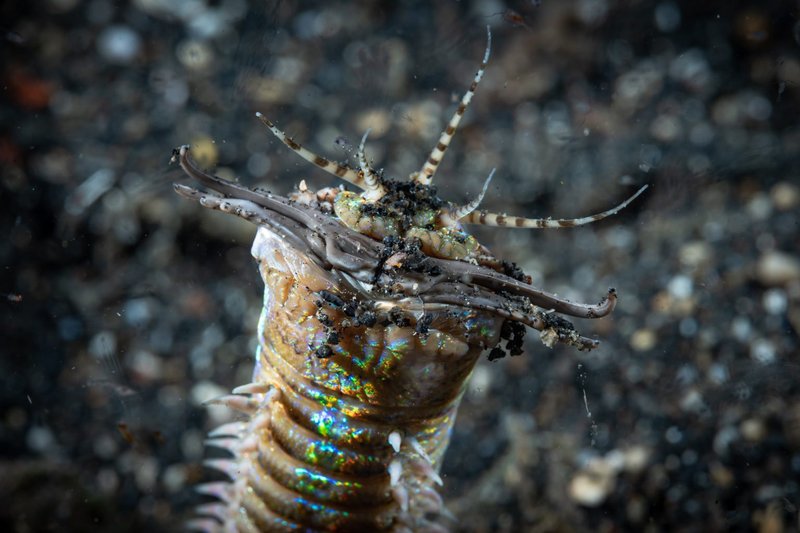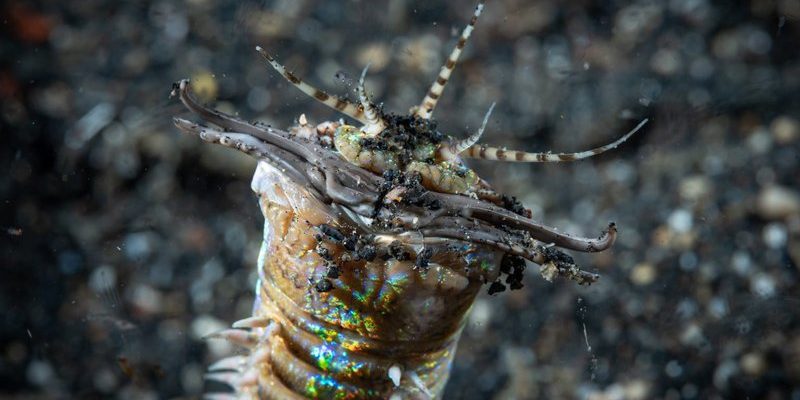
In this article, we’ll dive into the world of bobbit worms, exploring what makes them tick and debunking some of the common misconceptions. These worms, belonging to the genus *Eunice*, can grow up to ten feet long! But how dangerous are they, really? Let’s get started.
What Is a Bobbit Worm?
Bobbit worms are long, segmented worms found in tropical and subtropical waters worldwide. They often hide in sandy or muddy ocean floors, blending in perfectly with their surroundings. When prey comes too close, they spring into action, striking with incredible speed. Their unique hunting technique is one reason why they’ve earned a bit of a scary reputation.
You might be wondering about their appearance. Bobbit worms have vibrant colors, often green, red, or brown, and are equipped with sharp, tooth-like jaws. These features make them fierce predators, but don’t let that fool you into thinking they’re a threat to humans.
Sure, they have a strong bite, but their main goal is to catch smaller aquatic creatures, not to cause harm to unsuspecting beachgoers. In fact, they’re more interested in fish and crustaceans than they are in humans.
Myth 1: Bobbit Worms Are Man-Eaters
One of the most persistent myths about bobbit worms is that they can attack and eat humans. This idea likely stems from their aggressive hunting behavior. Honestly, it sounds more sensational than it is. Bobbit worms are not man-eaters; they primarily hunt fish and other smaller organisms.
Here’s the thing: bobbit worms don’t seek out humans as prey. Their jaws are strong enough to break bones of smaller fish, but they don’t have the size or the motivation to tackle a human. So, unless you’re swimming in the depths of the ocean and stick your hand directly in their burrow, you’re safe.
Instead of danger, consider bobbit worms a vital part of the marine ecosystem. They help control fish populations and play a role in the food chain.
Myth 2: Bobbit Worms Are Poisonous or Venomous
Another common myth is that bobbit worms are poisonous or venomous. While these creatures are indeed strong predators, they lack the kind of venom you might find in other marine animals like jellyfish or octopuses. Simply put, bobbit worms do not possess any toxins that would harm humans.
When they bite, they can cause pain—after all, they have sharp jaws—but the bite won’t lead to serious injury or illness. If by chance you were to get bitten, remember it’s more like a minor scrape than anything life-threatening.
If you’re cautious and respectful of their space, bobbit worms don’t present any real danger to you. Just like with any wildlife, it’s best to observe from a distance and let these fascinating creatures do their thing.
Fact: Bobbit Worms Have Unique Defense Mechanisms
While bobbit worms might not be man-eaters or poisonous, they do have some intriguing ways to defend themselves. When threatened, they can retract quickly into their burrows, making it tough for potential predators to reach them. This ability to camouflage and hide is a significant part of their survival strategy.
Additionally, bobbit worms can regenerate lost body segments. If a predator manages to take a bite out of them, they can grow back! This regenerative power isn’t just cool; it also plays a vital role in their resilience in the wild.
Their unique adaptations allow bobbit worms to thrive in their environments, proving that even creatures perceived as dangerous can also possess remarkable traits that help them survive.
Myth 3: You Can Catch a Bobbit Worm Easily
Many aquarists dream of having a bobbit worm in their home aquarium, leading to the myth that they can be easily caught. Here’s the truth: these worms are quite elusive. They burrow deep into the ocean floor, making them challenging to locate without specialized equipment.
When caught, bobbit worms can be tricky to handle. They’re not just long; they’re also quite strong. If you attempt to catch one, you might find yourself with a surprising amount of resistance. Plus, they can put up a fight, often twisting and wriggling to escape.
If you’re interested in keeping bobbit worms, make sure you’re prepared for the commitment. Having one as a pet requires careful setup and a different approach compared to other aquarium dwellers. They need the right environment to thrive, which can be a challenge.
Fact: Bobbit Worms Are Important to Marine Ecosystems
Bobbit worms play a crucial role in the marine ecosystem. By preying on smaller fish and invertebrates, they help maintain balance in the food web. Plus, their burrowing activity aerates the sea floor, benefiting other organisms and promoting healthy habitat conditions.
It’s easy to view bobbit worms as dangerous due to their fierce nature, but honestly, they contribute significantly to marine life. Every species, even the ones that seem intimidating, has a role to play. Embracing that complexity helps us appreciate the delicate balance within the oceans.
As we continue to learn more about these creatures, understanding their ecological importance only deepens our respect for marine biodiversity.
In closing, bobbit worms are fascinating, vital parts of our ocean ecosystems. While they might sound intimidating, the truths about them reveal a different story. They aren’t man-eaters, they aren’t poisonous, and they aren’t easy to catch. Instead, they are unique creatures with remarkable adaptations that help them thrive in their environment.
Next time you hear a myth about bobbit worms, you can confidently put the record straight. Knowledge is key to understanding and appreciating the natural world. Let’s celebrate the diversity of life below the ocean waves and recognize the important roles even the most misunderstood creatures play.

